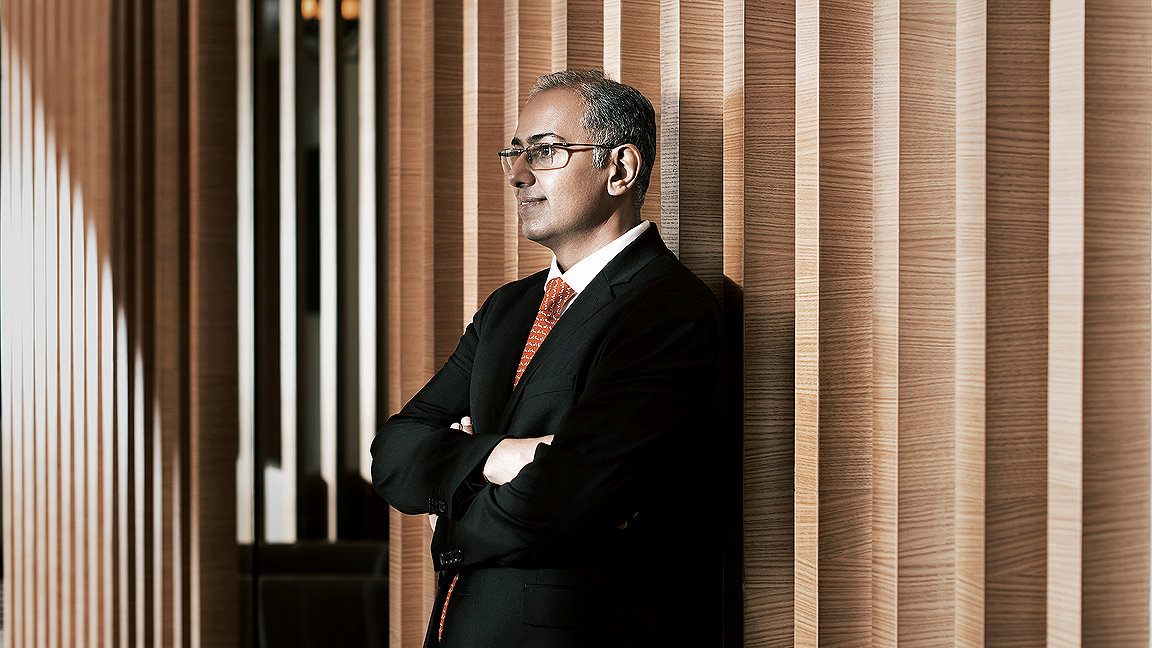
Photography by Aditya Mendiratta
India is on the road to recovery from a devastating wave of COVID-19 that peaked in mid-May when the country recorded more than 4,500 coronavirus-related deaths each day. Property is one of the many industries slowly getting back up to speed, but this is not the first time in recent years it has suffered a major setback.
Modus spoke to Sanjay Dutt FRICS, managing director and CEO of TATA Realty and Infrastructure Limited (TRIL) and Tata Housing Development Company Limited, to find out more about the ups, downs, ins and outs of Indian real estate.
How did the huge wave of COVID-19 that hit India this year affect the country?
Life in India is getting back under control, as vaccines are produced in India in large quantities. Although, if it wasn’t for reluctance from the public, the vaccination rate would be double by now. Since initial [vaccine] take-up was not so strong, the Indian government gave a lot of the vaccinations it produced to developing nations. By the time the second wave started and people were queuing up to get them, we were out of supply.
Personally, I was the only family member directly affected – I got COVID-19 last September. It was a wake-up call that I better get my act together. I was traveling to Delhi, and I think I caught it at the airport. It was negligence, to be honest.
It was the latest in a line of seismic shifts within the property industry in India. Has anything else had a comparable effect?
Real estate has had a rollercoaster ride for the last decade. India is a very speculative market. When foreign direct investment (FDI) in property was allowed in 2005, billions of dollars-worth of private equity funds came in.
I coined a word for foreign institutions at that time: REITs, Real Estate Investment Tourists. Any second-generation American or European of Indian origin was sent to India. But they didn’t understand India. More importantly, they didn’t understand Indian real estate.
Unlike developed markets, quality information was not available for you to analyse, to differentiate a good partner from a bad partner. Tier one developers were not taking private equity at that time – debt was cheaper. So the private equity went to tier two developers, and they lacked depth and experience.
Eventually the developers had to deliver on their promises. They were going into new markets or sectors, for example a residential developer going into hospitality or shopping centres. It was all new. In short, markets were not mature. The private equity went in at the peak of the market, and a lot of money was lost in 2007 and 2008.
What happened in the more recent non-banking financial company (NBFC) fiasco?
The government of India didn’t want speculation, as that is what created the Indonesian real-estate bubble 25 years ago, which in turn contributed to the country’s economic crisis in 1997-98. When they opened up to FDI, India made sure banks couldn’t lend for land purchases.
The government wanted developers to put equity up for land, so they were directly involved. Instead, developers turned to NBFCs, but they were expensive. They still didn’t put up their own equity. Developers borrowed from the banks for construction financing, and the land finance came from NBFCs.
There was a herd mentality to build residential, where there is a planned exit. They build and sell, unlike offices, where you build, lease and sell down the line. Residential is easy on the cash flow. But excessive speculation and inventory created a bubble. Speculators were responsible for 70% of demand in Delhi and other northern cities such as Gurgaon and Noida. That’s clearly a bubble.
When investors and speculators stopped making money, only end users remained. As a result, prices crashed. We were coming through this journey when COVID-19 came. The only ray of hope was office demand. Office is more capital-intensive, so there was less speculation.

All this was happening when the Real Estate (Regulation and Development) Act, or RERA, came into effect, along with other changes in bankruptcy law. Has this led to significant changes?
The government’s intentions to make the sector transparent are good. But these changes came at a time when the sector was already going through enough turbulence of its own.
Imagine you’re in the Atlantic on a small boat, and there are two tsunamis, coming from either side. For the first time in my career I saw tier two and tier three developers going belly up. For the first time in the 30 years of my professional life, I saw land values come down. Margins have come down. The cost of compliance has gone up.
“Real estate has had a rollercoaster ride the last decade. India is a very speculative market.”
What are the current headwinds facing real estate, other than the pandemic?
The cost of capital is very high. You can borrow in Tokyo for 1%, or 2% in the US. In India, Tata pays single digits, but most developers pay double digits, 14% to banks, or 18% to an NBFC. What are your chances of making a profit?
It still takes two years for approvals on projects, those 200 permissions you need from land acquisition to post-completion. It’s insane. You have to go to every department, while you’re paying up to 18% interest on capital. These challenges remain.
How are property professionals responding?
We are creating leaner, more agile organisations, bringing our costs down and outsourcing more. We are using precast technology to reduce the construction cycle. There are more digital solutions, more smart planning, just-in-time and bulk buying.
These are very positive outcomes, but at the expense of many perishing in the process. It’s survival of the fittest. The right organisations and individuals seize that opportunity and change.
I have a saying: “Maximum gain while in pain.” And I’m not joking. The last three years, whenever I’ve seen pain, I’ve seen the most gains come out of it.
What does this mean for surveyors, valuers, project managers and the like?
It’s raising the bar for a professional. It’s important to demonstrate you are qualified surveyors, certified valuers, graduates specialising in real estate. The RICS School of the Built Environment [set up in 2013 at Amity University] establishes them as specialists.
This initiative of RICS has been very well-received, and it has a great future. It was greatly needed. The School of Architecture and Planning is for a very select few, and for a country with a population of 1.4bn people, you need to train a lot more professionals. RICS has addressed that issue.
In India, we have always placed an emphasis on education. But as a country we were struggling, we needed to compete better. A lot of talent went to the US, Europe, Canada, Australia, Singapore. You will see Indians pretty much everywhere. Elon Musk may discover Indians on Mars when he gets there.
“For the first time in the 30 years of my professional life, I saw land values come down.”
Sanjay Dutt FRICS is the managing director and CEO of TATA Realty and Infrastructure Limited (TRIL) and Tata Housing Development Company Limited. Before joining TRIL, Dutt was CEO of Ascendas-Singbridge’s India operation and Private Funds where he was responsible for Real Estate asset management, development, and acquisition.


